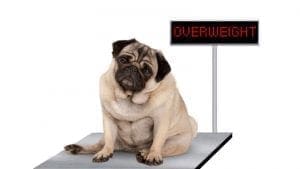
Senior pets typically face more pet health problems than younger animals do. Carrying excess
weight will only add to those problems. Read this article to learn how to tell if your pet is
overweight.
Look at Your Pet
Simply looking at your pet can help you determine if your furry friend needs to lose a few
pounds. If you have a dog, stand above your canine and look down at his or her shape. A
round, oval shape indicates that your dog is too heavy.
You should also get a side view of your dog. Look to see if your dog has a sagging abdomen,
which means your pet is overweight.
If you have a cat, stand above your feline and look for your kitty’s waistline. If there is no
definition behind the rib cage, your cat needs to lose weight.
You should also take a look at your cat’s tummy. If it swings between the back legs, your pet is
probably too heavy.
Feel Your Pet
A dog or cat’s ribs should be easy to feel as you run your hands over them. If you can’t feel
your senior pet’s ribcage, that means your four-legged buddy is carrying too much fat.
However, if your pet’s ribs are felt too easily, that could mean your pet is underweight. This pet
health problem is just as serious as weighing too much.
Take Your Pet to the Vet
Veterinarians can use their expertise to determine if your senior pet is overweight. After taking
multiple measurements of your pet, your veterinarian can put those numbers into a system
called Healthy Weight Protocol.
The system reveals your pet’s body fat index (BMI), which is then compared to your pet’s ideal
weight.
Remember, keeping your senior pet at the right weight is necessary if you want to promote good
pet health.
Learn more about caring for senior pets by listening to the Senior Pet Podcast.
